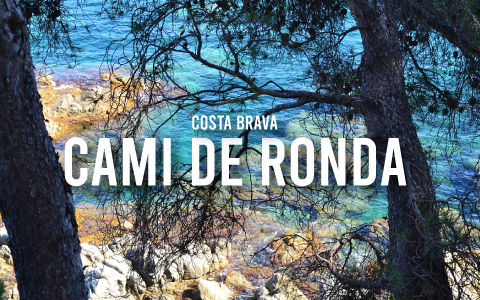
Discovering The Camí De Ronda: A Hiker’s Paradise In Costa Brava
Along the breathtaking coastline of Costa Brava in northeastern Spain lies the Camí de Ronda, a network of coastal trails that offers an unparalleled hiking experience. This remarkable trail system winds through rugged cliffs, pristine beaches, charming villages, and lush Mediterranean landscapes, making it a must-visit for outdoor enthusiasts and nature lovers alike.
What is the Camí de Ronda?
The Camí de Ronda, which translates to “Round Path,” is a historic coastal trail originally used by fishermen, smugglers, and the civil guard to patrol the coast. Today, it has been transformed into a series of well-marked hiking paths that stretch along the Costa Brava, providing hikers with stunning views of the Mediterranean Sea, hidden coves, and picturesque coastal towns.
The trail spans from the French border in the north to the town of Blanes in the south. This extensive trail system covers approximately 200 kilometers (124 miles) of diverse terrain, offering a wide range of hiking options suitable for various skill levels and preferences.
The entire length of the Camí de Ronda is divided into several sections, each with its own unique characteristics and attractions. Hikers can choose to tackle the entire trail over several days or select shorter segments for day hikes. The flexibility of the trail allows for customized hiking experiences, catering to both casual walkers and seasoned trekkers.
Starting Points and Key Sections of the Camí de Ronda
While the Camí de Ronda can be accessed from numerous points along the Costa Brava, some key sections and starting points stand out for their scenic beauty and accessibility:
1. Blanes to Tossa de Mar
This southernmost section of the Camí de Ronda is ideal for those looking to experience the trail’s charm without venturing too far north.
Starting in the town of Blanes, the trail meanders through rocky cliffs, sandy beaches, and pine forests, offering stunning views of the Mediterranean.
Highlights include the Sa Palomera rock, which marks the beginning of the Costa Brava, and the picturesque beach of Cala Sant Francesc.
The trail continues to Tossa de Mar, a historic town known for its medieval castle and fortified old town.
2. Tossa de Mar to Sant Feliu de Guíxols
This section is renowned for its dramatic coastal scenery and secluded coves.
Starting in Tossa de Mar, hikers will pass through Cala Pola, Cala Giverola, and Cala Futadera, each offering opportunities for a refreshing swim in crystal-clear waters. The trail then ascends to offer panoramic views of the coastline before descending into the charming town of Sant Feliu de Guíxols, known for its beautiful marina and the Benedictine monastery of Sant Feliu.
3. Sant Feliu de Guíxols to Palamós
Continuing north, this section combines coastal beauty with cultural attractions.
The trail passes through the scenic towns of S’Agaró and Platja d’Aro, both offering a range of amenities and picturesque beaches. Hikers will enjoy walking along the cliffside paths with stunning views of the sea before reaching the historic town of Palamós, famous for its fishing port and delicious seafood.
4. Palamós to Calella de Palafrugell
This segment is a favorite among hikers for -again- the combination of natural beauty and cultural heritage.
Starting in Palamós, the trail leads to the beach of La Fosca and the medieval castle of Sant Esteve de Mar. The path continues to the charming fishing village of Calella de Palafrugell, known for its whitewashed houses, narrow streets, and the famous Cap Roig Botanical Garden.
5. Calella de Palafrugell to Begur
One of the most picturesque sections of the Camí de Ronda, this stretch offers breathtaking views of the coastline and access to some of Costa Brava’s most beautiful coves.
Hikers will pass through Llafranc, a quaint coastal town with a lovely beach, and the lighthouse of Sant Sebastià, which offers panoramic views of the Mediterranean. The trail continues to the town of Begur, known for its hilltop castle and stunning views of the surrounding countryside.
Essential Information for a Great Hiking Adventure
Trail Difficulty and Preparation
The Camí de Ronda offers a variety of hiking experiences, from easy strolls to challenging treks. It’s important to choose sections that match your fitness level and hiking experience. Here are some tips to ensure a safe and enjoyable hike:
- Check the Weather: The Mediterranean climate is generally mild, but it’s essential to check the weather forecast before setting out. Summer can be hot, so plan hikes early in the morning or late in the afternoon to avoid the midday heat.
- Wear Appropriate Gear: Sturdy hiking shoes, comfortable clothing, a hat, and sunglasses are essential. Don’t forget to bring a swimsuit if you plan to take a dip in the sea.
- Stay Hydrated and Bring Snacks: Carry enough water and snacks to keep your energy levels up. There are also many opportunities to stop at local cafes and restaurants along the way.
- Follow the Trail Markers: The Camí de Ronda is well-marked with red and white signs, but it’s always good to have a map or GPS device for reference.
Best Time to Hike the Camí de Ronda
The best time to hike the Camí de Ronda is during the spring (April to June) and autumn (September to October) when the weather is pleasant, and the trails are less crowded. Summer (July to August) is also popular, but it can be hot and busy, especially in the more touristy areas.
Points of Interest of the Camí de Ronda
The Camí de Ronda is a great way to explore Costa Brava, offering an unforgettable journey through some of Spain’s most beautiful coastal landscapes. Whether you’re a seasoned hiker or a casual walker, the trail provides a unique opportunity to connect with nature, explore charming villages, and experience the rich cultural heritage of Catalonia. Here are some of the main points of interest to keep in mind.
- Medieval Towns: Explore the historic centers of Tossa de Mar, Begur, and Pals, with their narrow streets, ancient castles, and charming architecture.
- Beaches and Coves: Discover hidden gems like Cala Aigua Xelida, Cala Estreta, and Cala S’Alguer, perfect for a refreshing swim and relaxation.
- Natural Parks: The Cap de Creus Natural Park and the Montgrí, Medes Islands and Baix Ter Natural Park offer stunning landscapes and diverse wildlife.



